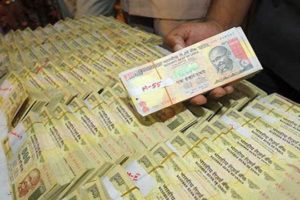Foreign investors have pumped in nearly Rs 6,800 crore (USD 1 billion) into the country’s capital markets so far this month, driven by global and domestic factors.
The latest infusion comes on top of a whopping inflow of Rs 25,904 in the preceding two months (July-August). Prior to that, foreign portfolio investors (FPIs) had pulled out a total of Rs 4,373 crore from the capital markets (equity and debt) in June and July.
Experts attributed the latest flurry in inflow to factors including good and widespread monsoon, better corporate earnings, sound progress on rollout progress of the Goods and Services Tax (GST) and positive data coming from the US economy.
Sentiments also rode high after domestic passenger vehicle sales grew for the 14th straight month in August, they added.
According to depositors’ data, net investment by FPIs stood at Rs 3,178 crore in equities during September 1-9, while the same for debt markets was at Rs 3,617 crore, taking the total inflow to Rs 6,795 crore (USD 1.02 billion).
So far this year, FPIs have invested Rs 44,028 crore in equities while withdrawing Rs 3,730 crore from the debt market. This resulted in a net flow of Rs 40,297 crore.






